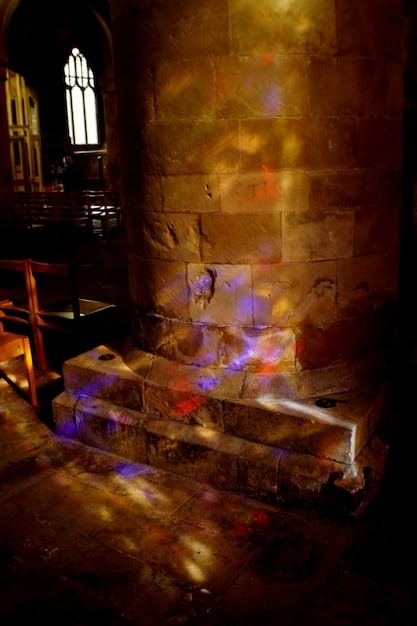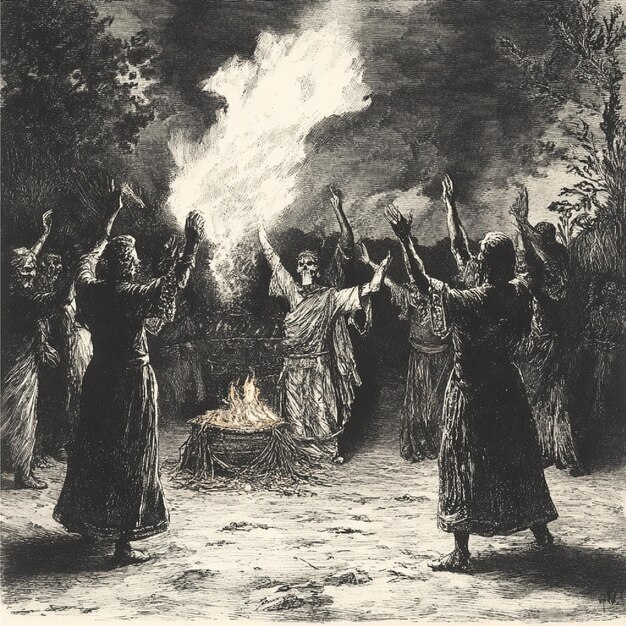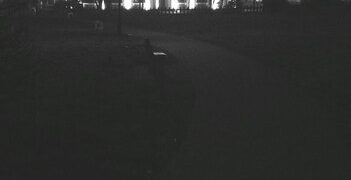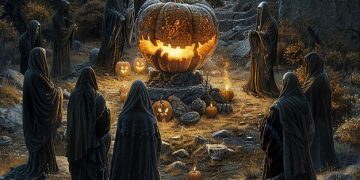Demonic Possession Cases: Are They Really Increasing? Facts Revealed

Demonic possession cases capture public imagination but it’s crucial to understand if headlines reflect a real increase or sensationalism. Examining historical context, psychological explanations, and modern reporting sheds light on whether demonic possession cases: are they actually increasing? Unveiling the facts behind the headlines is a fact or a myth.
Are demonic possession cases actually increasing? Unveiling the facts behind the headlines is a question that has haunted humanity for centuries. In an era saturated with information, it’s becoming increasingly difficult to discern fact from sensationalism. The concept of demonic possession, deeply entrenched in religious and cultural narratives, has seen a resurgence in popular media, sparking debates about its authenticity and prevalence. But is what we see in the headlines a true reflection of reality?
Join us as we delve into the historical context, psychological explanations, and contemporary reporting surrounding alleged demonic possessions to separate fact from fiction. By employing a balanced approach, we can explore what may be driving the perception of an increase in these occurrences, and by taking a deep dive, get closer to the truth behind demonic possession cases: are they actually increasing? Unveiling the facts behind the headlines.
Demonic Possession: A Historical Perspective
The belief in demonic possession is as old as civilization itself. Ancient cultures across the globe have documented accounts of individuals believed to be inhabited by malevolent spirits. These narratives often intertwine with religious beliefs, societal norms, and the understanding of mental health at the time.
Let´s explore how these old stories reflect on today’s society:
Ancient Civilizations and Demonic Influence
In ancient Mesopotamia, texts describe illnesses and afflictions attributed to demonic forces. Similarly, ancient Egypt had rituals and incantations designed to exorcise evil spirits. These early accounts provide a glimpse into how various cultures perceived and addressed phenomena that are now understood through modern medicine and psychology.
Medieval Europe and the Height of Possession Belief
The Middle Ages witnessed a surge in reported demonic possessions in Europe. The Catholic Church played a central role, defining the criteria for possession and conducting exorcism rites. During this period, many individuals, particularly women, were accused of witchcraft and demonic pacts, leading to the infamous witch hunts.
- The Malleus Maleficarum: A key text that codified beliefs about witchcraft and demonic possession.
- Exorcism Rites: Formalized procedures to expel demons, highlighting the Church’s authority over spiritual matters.
- Witch Hunts: Tragic events where accusations of demonic influence led to persecution and execution.

These historical events are crucial to understanding the social and religious context in which demonic possession was interpreted. The narratives from these times often reflect broader societal anxieties and power dynamics.
The Psychological Angle: Mental Health or Demonic Influence?
Modern psychology offers alternative explanations for behaviors and symptoms once attributed to demonic possession. Conditions such as schizophrenia, dissociative identity disorder, and epilepsy can manifest symptoms that mimic possession, leading to misinterpretations.
Understanding Mental Disorders
Mental health professionals emphasize the importance of accurate diagnoses and evidence-based treatments for individuals exhibiting unusual behaviors. Understanding the psychological factors at play helps differentiate genuine medical conditions from perceived demonic influence.
Symptoms of Mental Disorders Mistaken for Possession
Several symptoms associated with mental disorders can be mistaken for signs of possession:
- Voice Hearing: Auditory hallucinations in schizophrenia may be perceived as demonic voices.
- Personality Changes: Dissociative identity disorder can cause abrupt shifts in behavior and identity, resembling possession.
- Seizures: Epileptic seizures can involve convulsions and loss of awareness, which historically were attributed to demonic influence.
By recognizing these psychological underpinnings, clinicians can provide appropriate care and support to those in need, moving away from harmful and unfounded beliefs.
Examining Contemporary Reports of Demonic Possession
In modern times, reports of demonic possession persist. These cases often gain media attention, fueling public interest and debate. However, it’s essential to critically assess these reports, considering both the cultural context and the potential for misinterpretation.
It becomes relevant to discuss if these reports are backed by evidence or if they are just rumors:
Media Influence and Sensationalism
The media plays a significant role in shaping public perception of demonic possession cases: are they actually increasing? Unveiling the facts behind the headlines. Sensationalized reporting can amplify fears and misconceptions, making it difficult to discern the truth.
The Role of Cultural Beliefs
Cultural beliefs and religious practices can influence the interpretation of unusual experiences. In some societies, possession beliefs are deeply ingrained, leading individuals to attribute psychological or medical issues to demonic forces.
Case Studies: Analyzing Recent Claims
Examining specific cases of alleged demonic possession reveals a range of factors at play. Some cases may involve genuine mental health issues, while others may be influenced by cultural beliefs or misinterpretations. Careful analysis allows for a more nuanced understanding of these complex situations.
- Anneliese Michel: A well-known case where a young woman’s mental health issues were attributed to demonic possession, leading to tragic consequences.
- Contemporary Exorcisms: Instances where exorcism rites are performed in response to perceived demonic influence.
- Skeptical Investigations: Reports from skeptical investigators who seek to debunk or explain alleged possession cases.
Ultimately, contemporary considerations can either prove or dismiss the idea of demonic presence.
The Catholic Church’s Stance on Demonic Possession
The Catholic Church maintains a formal process for discerning and addressing cases of alleged demonic possession. This process involves careful evaluation by clergy members and medical professionals to determine the nature of the affliction.
The church has been a strong voice, but is it truth or belief?
The Process of Discernment
When an individual is believed to be possessed, the Church follows a specific protocol. This includes gathering information about the person’s background, conducting medical and psychological evaluations, and assessing the symptoms to rule out other possible explanations.
Criteria for Demonic Possession
The Church outlines specific criteria for determining demonic possession. These include:
- Speaking in tongues unknown to the individual.
- Demonstrating knowledge of hidden or remote things.
- Displaying superhuman strength.
- Aversion to religious symbols or objects.
It’s important to note that these criteria are interpreted within a religious context and are not universally accepted as scientific evidence of possession.
The Role of Exorcism
Exorcism is a ritual performed by authorized clergy members to expel demons from a possessed individual. The Church views exorcism as a serious and rare intervention, reserved for cases where demonic possession is deemed highly probable.
The Catholic Church’s rigorous process reflects its commitment to responsible assessment and intervention in cases of alleged demonic possession, providing a framework for addressing spiritual concerns.
Demonic Possession Cases: Are They Actually Increasing? Unveiling the Facts Behind the Headlines
So, are demonic possession cases: are they actually increasing? Unveiling the facts behind the headlines is what we want to discover. We can explore multiple elements and beliefs that bring us to our final conclusion.
The Influence of Media and Culture
The media can be a great asset of mass misinformation, take a look at the role it plays in society:
- Sensationalism: Media outlets often sensationalize stories of demonic possession to attract viewers and readers.
- Cultural Impact: Films, books, and television shows can shape public perception and increase awareness.
- Availability of Information: The internet provides easy access to both credible information and misinformation about demonic possession.
Real-World Factors
On the other hand, here are some real-world facts to take into consideration:
- Mental Health Awareness: Increased awareness of mental health issues has led to more accurate diagnoses.
- Cultural Context: Cultural beliefs about possession may influence people’s understanding.
- Religious Beliefs: Varying religious beliefs directly contribute to how people see possession, since not all religions acknowledge good and bad spirits.
This helps you determine what is true on the surface and what needs more investigation, allowing for a more nuanced perspective on the subject.
| Key Point | Brief Description |
|---|---|
| 🤔 Historical Beliefs | Many ancient cultures had stories of malevolent beings influencing people’s lives. |
| 🧠 Psychological Factors | Conditions like schizophrenia can produce symptoms mistaken for possession. |
| 📰 Media Impact | Media sensationalism can amplify fears and change perception. |
| ⛪ Catholic Church | The church follows a strict process when handling a potential possession. |
Frequently Asked Questions
Many ancient cultures believed in malevolent spirits that could inhabit and control individuals. These beliefs were often intertwined with religious practices and attempts to ward off evil forces.
Modern psychology attributes these symptoms to mental health conditions such as schizophrenia, dissociative identity disorder, and epilepsy. These conditions can cause behaviors and experiences that may be misinterpreted as demonic possession.
The media can sensationalize stories of demonic possession, leading to increased fear and public interest. Sensationalized reporting can distort reality, making it difficult to discern fact from fiction.
The Catholic Church has specific criteria, which include speaking in unknown languages, demonstrating knowledge of hidden things, displaying superhuman strength, and aversion to religious symbols. These are applied during a process of discernment.
Yes, factors such as cultural context, mental health awareness, and individual experiences all play a role. These can influence who assigns a phenomena to possession or a different cause.
Conclusion
In conclusion, the perception of an increase in demonic possession cases: are they actually increasing? Unveiling the facts behind the headlines may be influenced more by media sensationalism and cultural beliefs than by actual verifiable occurrences. Psychological explanations offer alternative understandings of the behaviors and symptoms often associated with possession.
While the phenomenon of demonic possession continues to intrigue and frighten, a balanced approach that considers historical context, psychological insights, and critical analysis is essential for discerning the truth behind the headlines as more information and understanding continues to develop.





